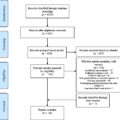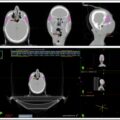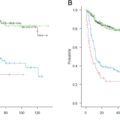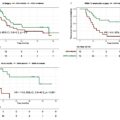We wish to address the article entitled “Evaluation of the 10 %-rule in sentinel lymph node biopsy for clinically node-negative oral squamous cell carcinoma” by Tellman et al. . While the study explores an important topic, namely the intraoperative application of the 10 %-rule for sentinel lymph node (SLN) biopsy in early-stage oral squamous cell carcinoma (OSCC), several methodological and interpretative issues merit further discussion.
The authors’ reliance on a retrospective, single-center design raises concerns about the generalizability of their findings. Retrospective studies are inherently limited by potential biases in data collection and the absence of randomization. Moreover, the inclusion of patients over a nine-year period introduces variability in surgical techniques, pathological assessments, and technological advancements that may have influenced outcomes . The authors’ omission of detailed information on these evolving practices undermines the robustness of their conclusions.
A significant methodological limitation pertains to the study population. The inclusion criteria for clinically node-negative OSCC (cT1-3N0) encompass a broad spectrum of tumor sizes and depths of invasion . While the authors adhered to TNM staging guidelines, they did not adequately stratify results based on tumor stage or depth of invasion (DOI). DOI is a well-established predictor of nodal metastasis, and its interplay with the 10 %-rule should have been explored in greater detail. Stratified analysis could have provided insights into whether the 10 %-rule performs uniformly across varying tumor characteristics .
The authors report that 98 of 233 lymph nodes (LNs) harvested contained metastases, with 190 LNs meeting the 10 %-rule. However, their discussion does not adequately address the clinical implications of the false-negative rate . While the 10 %-rule correctly staged 69 of 70 metastatic sides of the neck, the omission of one metastatic side warrants further scrutiny. Missing even a single metastatic node could have significant consequences for patient management and prognosis. A more nuanced discussion of the clinical ramifications of this missed case would have strengthened the manuscript.
Additionally, the exploration of alternative thresholds (e.g., 15 % or 20 %) lacks statistical rigor. The authors state that increasing the threshold to 20 % resulted in fewer lymph nodes being classified as SLNs but at the expense of missing an additional metastatic node. However, the decision to maintain the 10 %-rule is presented without adequate justification. A more comprehensive analysis, including sensitivity, specificity, and predictive values for each threshold, would have provided a clearer understanding of the trade-offs associated with altering the cut-off point .
Another notable limitation is the authors’ approach to defining the “hottest” SLN as the node responsible for upstaging the neck. This assumption is overly simplistic and fails to account for the biological heterogeneity of metastases. For example, micrometastases in lower-activity nodes may still carry prognostic and therapeutic significance. By focusing exclusively on the “hottest” node, the authors risk underestimating the importance of other metastatic nodes . Future studies should explore the potential value of incorporating all positive nodes into clinical decision-making.
The intraoperative application of the 10 %-rule to each side of the neck also warrants critical evaluation. While the authors suggest that this approach increased the detection of one metastatic LN, they concede that it did not upstage the corresponding side of the neck. This raises questions about the clinical utility of applying the rule bilaterally . Without a clear benefit in terms of staging accuracy or patient outcomes, the added complexity of this approach may not be justified.
Histopathological evaluation of SLNs in the study followed established protocols, including step-serial sectioning and immunohistochemistry. However, the reliance on these methods alone may have led to under-detection of isolated tumor cells or micrometastases. Emerging techniques, such as molecular assays and next-generation sequencing, offer greater sensitivity and could complement conventional histopathology in future research . The authors missed an opportunity to discuss the potential integration of these advanced modalities into SLNB protocols.
Finally, the discussion section—while thorough in some respects—does not adequately address the broader implications of the findings. For instance, the study’s results could inform updates to international guidelines for SLNB in OSCC, yet this is only briefly mentioned. Additionally, the potential impact of the findings on surgical training, resource allocation, and patient counseling is overlooked. A more forward-looking discussion would have increased the study’s relevance to a wider audience.
In conclusion, while the study by Tellman et al. contributes valuable data on the intraoperative application of the 10 %-rule in SLNB for OSCC, its methodological limitations and interpretative gaps limit the applicability of the findings. Future research should address these issues by employing prospective, multicenter designs, stratifying results based on tumor characteristics, and incorporating advanced diagnostic tools. We hope these comments will stimulate further discussion and research on this critical topic.
Declaration of competing interest
The authors declare that they have no known competing financial interests or personal relationships that could have appeared to influence the work reported in this paper.
Acknowledgements
None.
Funding
None.
Ethical approval
Not required.
References
Stay updated, free articles. Join our Telegram channel

Full access? Get Clinical Tree








